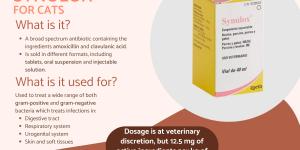Famotidine for Dogs - Pepcid Uses and Dosage



See files for Dogs
Famotidine is a drug that is also commonly used in human medicine. While it will depend on the country of residence, some formulations can be purchased over the counter. Many still require prescription. One of the most common brands which uses famotidine as the main active ingredient is Pepcid. With such wide availability and common use, it is understandable we may wonder can use famotidine for dogs?
While we may be able to judge the use of famotidine for ourselves in certain cases, it is important we understand that famotidine for dogs should only be used under the strict advice of a trusted veterinarian. We explain the reasons why by looking at the Pepcid uses, dosage, side effects and more in dogs.
What is famotidine for dogs?
Famotidine is an active substance that is included in the group of H₂-receptor antagonist drugs or H₂-blockers. It works by blocking the H₂ receptor, thereby inhibiting the secretion of gastric acid that induces histamine. Specifically, it prevents the union of histamine released by stomach cells with its receptor. In doing so, the secretion of hydrochloric acid is significantly reduced.
Famotidine is considered more powerful than other active ingredients in its group, such as cimetidine and ranitidine. It is long lasting, but its strength means its use is not applicable for all cases of gastric upset in dogs. Its action works to help aid digestion and counteract the symptoms of indigestion. It has an anti-ulcerative effect by reducing gastric acid production in the stomach.
Famotidine for dogs has a problem of poor absorption. Only 37% is effectively used when administered orally. It is eliminated through the dog's urine.
Learn more about gastric acid reducers with our articles on cimetidine for dogs and ranitidine for dogs.

Famotidine for dogs uses
Famotidine is used to treat diseases associated with acid produced in the stomach. In veterinary practice, famotidine for dogs is prescribed in cases of various types of gastritis (inflammation of the dog's stomach lining), gastroduodenal ulcers, esophagitis due to reflux or systemic mastocytosis. Famotidine resolves symptoms associated with these conditions.
These digestive disorders have to be diagnosed by a veterinarian. Even if you have famotidine in your medicine cabinet, don't give it to your dog without express permission from a professional. Treatment with this drug requires regular veterinary supervision.
It should be noted that dogs are often very sensitive to the formation of gastroduodenal ulcers as a side effect of NSAID administration. Famotidine manages to mitigate the decrease in gastric flow in these cases. In doing so, it contributes to the prevention of these ulcers in dogs undergoing prolonged treatment with NSAIDs, although its efficacy is controversial.
Studies have found that famotidine is very effective when used as a gastric acid suppressant in early stages of treatment[1]. However, it should be noted that caution is required when using famotidine over prolonged periods. Some evidence suggests its effectiveness decreases over time[2]. This is another reason it is so important to follow veterinary instruction.
Famotidine dosage for dogs
The dose of famotidine for dogs can only be prescribed by the veterinarian. The same applies for duration of administration time and the frequency between each dose. As is often the case with any drug, it will depend on the clinical situation and the characteristics of the individual dog. Any treatment needs to be specific to their individual needs.
With such diversity of canine patients, the range of the recommended dose is very wide. Generally speaking, the administration of oral famotidine for dogs is between 0.1 and 1 mg per kg of dog weight. It can be given between one and two times a day. Once the treatment has started, it must be maintained for as long as the veterinarian has indicated, even if we notice improvement beforehand.
Famotidine in dogs is usually sold in tablet form and are best administered before eating. They can be broken up to facilitate their consumption, especially if it is necessary to hide the tablet in the food. Other formats include injectable famotidine for dogs (administered by the veterinarian) or the oral suspension. In the latter case, famotidine is in powder form that must be reconstituted by adding water. These are often sold under the brand name Pepcid, but other brands such as Zantac 360 and generic brand famotidine are available.
Find out more ways to better medicate your dog with our guide to giving a dog pills after surgery.
Contraindications of famotidine in dogs
Famotidine could interact with other drugs. If our dog is consuming or has just consumed any medication, we have to inform the veterinarian of type and dosage. This includes food supplements. Dogs that have shown allergic reactions to famotidine at some point should not consume this drug again. It can be given to female dogs during pregnancy or lactation, although always following the advice of the veterinarian.
Extreme precautions must be taken with dogs suffering from already diagnosed canine liver diseases or kidney failure. Caution is also recommended in cases of elderly dogs or those with any previous condition that weakens their immune system. If after administering famotidine for dogs we perceive any adverse effect, we must inform the veterinarian. We will have to do the same if it seems to us that the drug is not having the effect within the treatment time.

Side effects of famotidine for dogs
Occasionally, famotidine can cause adverse reactions in the dog, although these are rare. Among them, the following stand out:
- Loss of appetite
- Vomiting
- Diarrhea
- Dryness in mucous membranes and skin
- Hypotension
- Decreased heart rate in cases where it is administered intravenously
Although it is considered a very safe drug if used according to the recommendations of the veterinarian, if an overdose occurs, it is possible to detect symptoms such as the following:
- Vomiting
- Nervousness
- Increased heart rate
- Collapse
Vomiting and diarrhea in dogs is also a common symptom in other gastrointestinal disorders, so we will need to consider all factors. Speak to your veterinarian if in doubt and go to an emergency veterinary clinic if the dog has gone into shock.
This article is purely informative. AnimalWised does not have the authority to prescribe any veterinary treatment or create a diagnosis. We invite you to take your pet to the veterinarian if they are suffering from any condition or pain.
If you want to read similar articles to Famotidine for Dogs - Pepcid Uses and Dosage, we recommend you visit our Medicine category.
1. Kuhl, A., Odunayo, A., Price, J., Hecht, S., Marshall, K., Steiner, J., & Tolbert, M. K. (2020). Comparative analysis of the effect of IV administered acid suppressants on gastric pH in dogs. Journal of veterinary internal medicine, 34(2), 678–683.
https://doi.org/10.1111/jvim.15718
2. Tolbert, M. K., Graham, A., Odunayo, A., Price, J., Steiner, J. M., Newkirk, K., & Hecht, S. (2017). Repeated Famotidine Administration Results in a Diminished Effect on Intragastric pH in Dogs. Journal of veterinary internal medicine, 31(1), 117–123.
https://doi.org/10.1111/jvim.14615
- Hata, J., Kamada, T., Manabe, N., Kusunoki, H., Kamino, D., Nakao, M., Fukumoto, A., Yamaguchi, T., Sato, M., & Haruma, K. (2005). Famotidine prevents canine gastric blood flow reduction by NSAIDs. Alimentary pharmacology & therapeutics, 21 Suppl 2, 55–59.
https://doi.org/10.1111/j.1365-2036.2005.02475.x - Veterinary Portal. (2018). Gastrointestinal Pharmacology.







